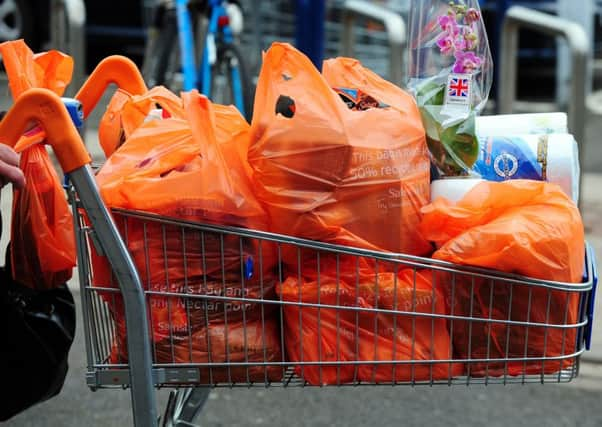Supermarket sales increase but sector still ravaged by price war


The latest grocery share figures from Kantar Worldpanel, for the 12 weeks ending 28 February 2016, show a small increase in supermarket sales which are up by 0.5 per cent compared with a year ago.
This is the fastest rate of growth since October 2015 but is still being held back by the ongoing price war and falling grocery prices, which are down by 1.6 per cent – a continuous decline which began in September 2014.
Advertisement
Hide AdAdvertisement
Hide AdSainsbury’s has posted the longest run of sales growth for any of the big four retailers since March 2013, while Tesco has halved its sales decline since last period, with revenues falling by 0.8 per cent during the period. Bradford-based Morrisons continues to be affected by its store closures with market share down to 10.6 per cent.
Fraser McKevitt, head of retail and consumer insight at Kantar Worldpanel, said: “Despite prices continuing to decline, the combination of Valentine’s Day, and consumers stocking up for an early Easter has boosted certain categories.
“February chocolate sales are up by 13 per cent, cut flowers have increased by 7 per cent, and sparkling wine sales are up by 15 per cent.
“New Year resolutions to eat more healthily don’t seem to have been forgotten, helping fruit and vegetable revenues to grow by 4 per cent despite like-for-like produce prices falling.”
Advertisement
Hide AdAdvertisement
Hide AdAcross the main retailers Sainsbury’s was again the only one of the big four to increase overall spend. Sales grew for the eighth period in a row, up by 0.5 per cent – this is the longest run of sales growth for any of the four main retailers since March 2013. The grocer has been boosted by strong online sales and its Sainsbury’s Local convenience stores, though its overall share remained flat at 16.8 per cent.
Mr McKevitt said: “Tesco’s positive run continues as its overall sales fell by 0.8 per cent – halving last month’s decline of 1.6 per cent. A renewed focus on price promotions has helped stem the flow of shoppers leaving the retailer despite the closure of around 50 stores in the last year.
“Morrisons is also operating fewer stores than last year which continues to contribute to its falling sales – this month down by 3.2 per cent with market share dipping to 10.6 per cent.
“Online, Morrisons’ sales are growing strongly, a trend set to continue in the coming months as the retailer converts more existing in-store shoppers to its e-commerce channel.
Advertisement
Hide AdAdvertisement
Hide Ad“Despite being a relative latecomer to online grocery, Morrisons’ forthcoming tie-up with Amazon could provide another boost to the business.”
Compared with the 0.5 per cent growth in the overall market, sales in larger stores have fallen by 2 per cent as consumers spend less per average trip in these shop formats.
This has disproportionally affected Leeds-based Asda with its large stores, with sales falling by 4 per cent and market share down to 16.2 per cent. Waitrose saw sales growing by 0.2 per cent, maintaining its 5.2 per cent share of the market for the third period in a row.
The smaller retailers market share gains were made by the Co-operative, Aldi and Lidl. The Co-operative’s share grew to 6 per cent after an increase in shopper frequency contributed to a sales increase of 1.9 per cent. The discounters’ combined share climbed back to the 10 per cent high they reached before Christmas. Lidl’s sales grew by 18.9 per cent and Aldi’s by 15.1 per cent.
Advertisement
Hide AdAdvertisement
Hide AdWith current Sunday trading restrictions up for debate this week, there could be a change to shopping hours. However, the change could only see a marginal increase in the number of groceries sold on a Sunday.
Mr McKevitt: “In an average week 32 per cent of households visit a grocer on a Sunday. This is considerably fewer than the 46 per cent visiting on a Saturday, the most popular day to shop.
“When stores could last open for the full day during the 2012 Olympics and Paralympics we witnessed only a marginal increase in the proportion of groceries bought on a Sunday, suggesting longer opening hours won’t necessarily translate into greater sales.”